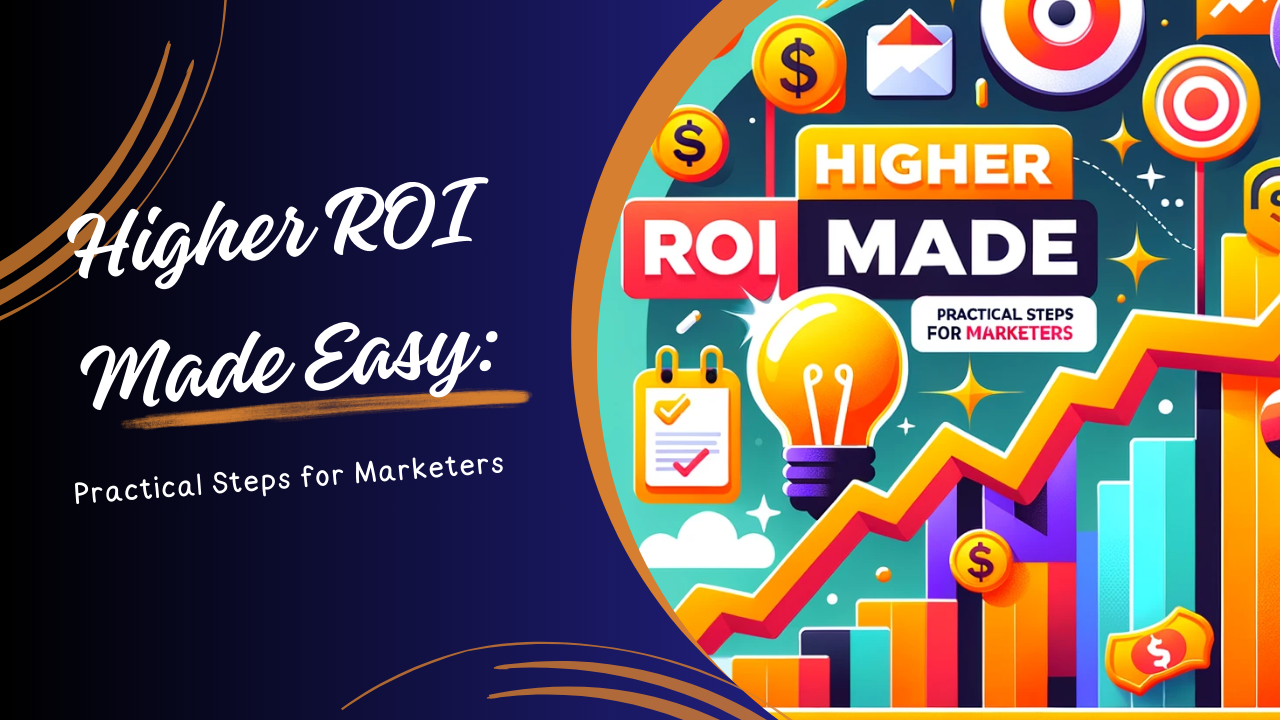
Achieving a higher return on investment (ROI) can sometimes feel like chasing a rainbow. But don’t worry, I’m here to guide you through some practical steps to make that rainbow a bit more reachable. Whether you’re new to marketing or a seasoned pro, these strategies will help you get the most out of your marketing budget. Ready to dive in? Let’s get started!
Understanding ROI in Marketing
First things first, let’s clarify what ROI in marketing means. Simply put, ROI measures the profitability of your marketing efforts. It’s calculated by dividing the net profit from your marketing activities by the cost of those activities. The higher the ROI, the better your campaigns are performing.
Practical Steps to Achieve Higher ROI
Step 1: Set Clear Goals and KPIs
Before diving into any marketing campaign, it’s crucial to set clear goals and key performance indicators (KPIs). These will guide your efforts and help you measure success.
- Example: If your goal is to increase website traffic, your KPIs might include the number of unique visitors, bounce rate, and average session duration.
Step 2: Know Your Audience
Understanding your audience is key to crafting effective marketing messages. Use data analytics tools to gather insights about your audience’s demographics, preferences, and behavior.
- Example: If your target audience is young adults interested in tech, tailor your content to include the latest tech trends and gadgets.
Step 3: Optimize Your Campaigns
Regularly review and optimize your marketing campaigns to ensure they’re performing at their best. This involves testing different elements, such as headlines, images, and calls to action (CTAs).
- Example: A/B testing can help you determine which version of your ad generates more clicks and conversions.
Step 4: Leverage Data Analytics
Data analytics is your best friend when it comes to improving ROI. Use analytics tools to track and analyze your campaign performance. This data will help you make informed decisions and identify areas for improvement.
- Example: Google Analytics can provide insights into your website traffic, user behavior, and conversion rates.
Step 5: Focus on High-Impact Channels
Not all marketing channels are created equal. Identify which channels yield the highest ROI and focus your efforts there. This might mean investing more in social media, email marketing, or pay-per-click (PPC) advertising.
- Example: If your email marketing campaigns consistently drive more sales than social media, allocate more budget to email marketing.
Step 6: Create High-Quality Content
Content is king, and high-quality content can significantly boost your ROI. Create engaging, informative, and relevant content that resonates with your audience.
- Example: Blog posts, videos, and infographics that address your audience’s pain points can drive more engagement and conversions.
Step 7: Automate Where Possible
Marketing automation can save you time and increase efficiency. Use tools to automate repetitive tasks, such as email campaigns and social media posting.
- Example: An email automation tool can send personalized follow-up emails to leads based on their behavior, increasing the chances of conversion.
Step 8: Retarget Your Audience
Retargeting helps you reach potential customers who have previously interacted with your brand. This can increase the likelihood of conversion and boost your ROI.
- Example: Use retargeting ads to remind visitors who abandoned their shopping carts to complete their purchase.
Real-Life Example: A Successful ROI Boost
Let me share a real-life example from my own experience. At ramsetucoding.com, we initially struggled with low ROI on our marketing campaigns. By implementing the steps mentioned above, we saw significant improvements.
- Set Clear Goals: We set a goal to increase course enrollments by 20% within three months.
- Know Your Audience: We analyzed our audience data and discovered a high interest in Python programming.
- Optimize Campaigns: We tested different ad creatives and found that tutorial videos performed best.
- Leverage Data Analytics: Google Analytics helped us identify high-performing pages and optimize them further.
- Focus on High-Impact Channels: We allocated more budget to PPC advertising, which had a higher conversion rate.
- Create High-Quality Content: We produced in-depth Python tutorials that attracted more users.
- Automate Where Possible: We used email automation to send personalized course recommendations.
- Retarget Audience: We used retargeting ads to reach users who visited our site but didn’t enroll.
Result? Our enrollments increased by 30%, and our ROI improved by 25% within the targeted period!
Conclusion: Start Boosting Your ROI Today
Achieving a higher ROI doesn’t have to be a daunting task. By setting clear goals, understanding your audience, optimizing campaigns, leveraging data analytics, focusing on high-impact channels, creating high-quality content, automating tasks, and retargeting your audience, you can significantly boost your marketing ROI. So, what are you waiting for? Start implementing these practical steps today and watch your ROI soar.

